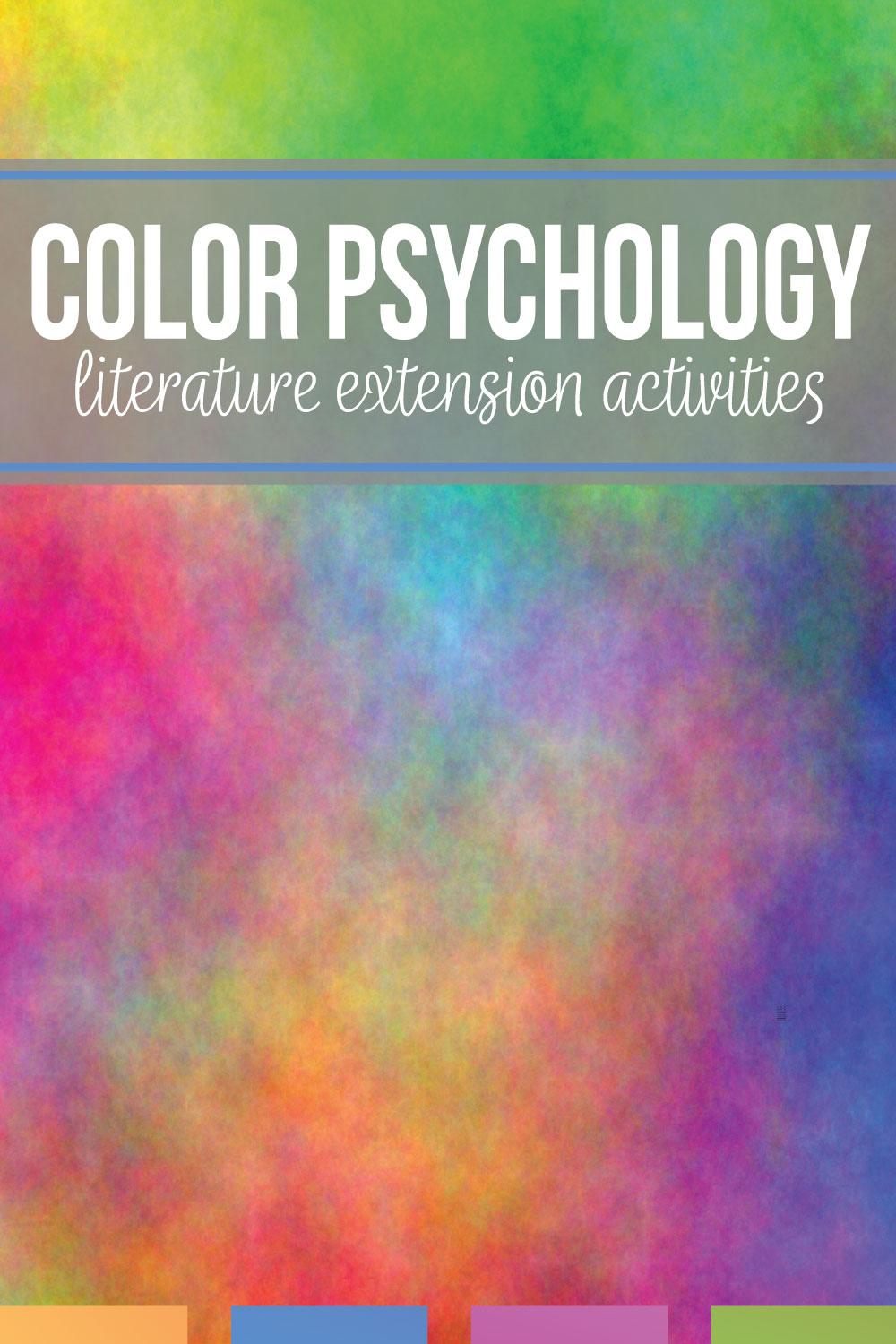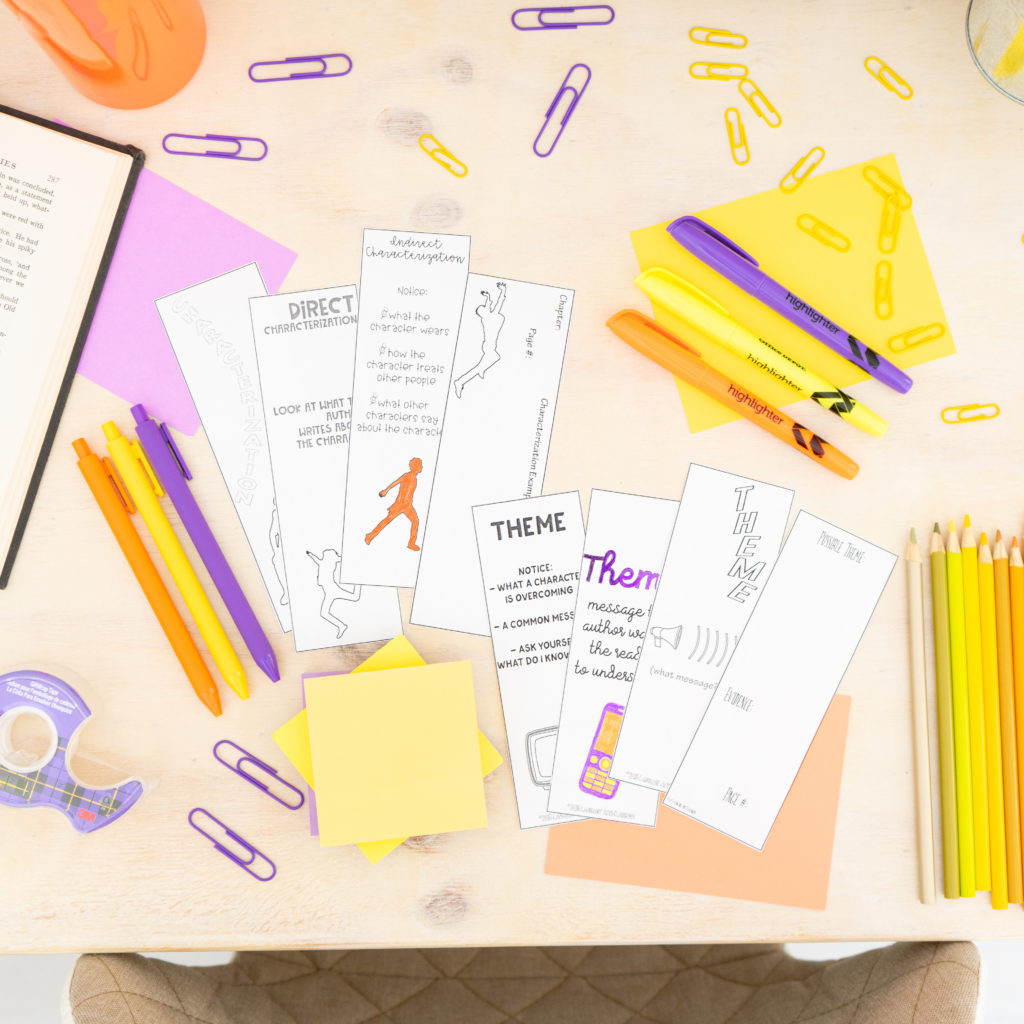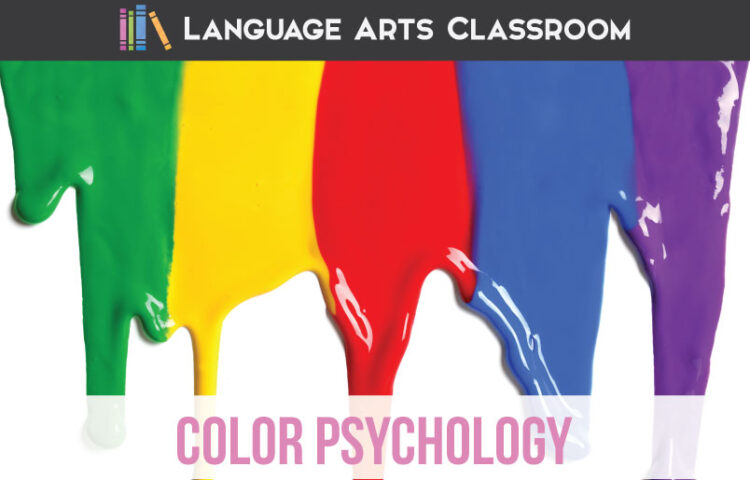Teaching color psychology is a quick add-on to literature lessons. In this post, I’ll provide some links and ideas to for analyzing colors with students.
Years ago when I taught “The Scarlet Ibis,” students and I discussed the use of colors within the short story. After all, “scarlet” is a very descriptive form of red. That question started our pre-reading activities: What meaning does “scarlet” convey? Is the author foreshadowing? Could a red bird be positive? ominous? foreboding?
Students always had opinions, and we researched ibises. Of course by the end of that short story, students understood the meaning of a blood-red bird. By close reading other sections of that story, students also found other colors, such as the green poison on top of Doodle’s casket.
Over the years, teaching color psychology with literature has opened discussions and brought interesting perspectives to my classroom. When teaching The Book Thief or Red Queen, among others, color psychology has brought new depth to my literature lessons. Below, I’ve included talking points and links for you to add color psychology to your literature lessons.

Teaching color psychology with literature: Why?
Whenever I use color psychology as an extension activity with literature, I find several benefits. Colors surround students, and they latch onto these discussions.
Build on prior knowledge.
Students already know colors. If you ask them what their favorite color is, most of them will have an opinion. They will discuss sports teams, religious figures, and club membership. Students already have a starting point with color psychology. Plus, you can have them take a quiz for fun. Finally, this prior knowledge component is a great way to build relationships with students. For instance, students often share how the colors of their rooms have changed as they’ve aged.
Connect to students’ futures.
Businesses and advertisers purposefully use colors to convey meaning to customers. If students find the topic interesting, they can find work in visual design or marketing.
Meet standards.
Many standards ask students to look at the develop of a concept throughout a piece of literature or to draw inferences from the text. By looking at colors, you can help students see how colors associated with characters, themes, or symbols build throughout a story.
Teach media literacy.
If marketers specifically use colors to target consumers, my students need to be aware!
Whenever I cover media literacy, I bring in products. For instance, I might lug a laundry basket full of my cleaning products to my classroom. What colors are these items? Normally they are green, orange, and yellow. The colors harken to fresh and bright references.
If I bring in health care products, I am sure to bring in my husband’s products as well. What are the differences in colors for genders? Are these colors used purposefully?
Teaching color psychology with literature: Activities.
So those are the reasons why discussing color psychology are worthwhile in the classroom. I’m sure you have thought of numerous activities that you could create from reading those. Here are some super easy, super fast ones.
Find direct quotes.
When a piece of literature directly uses colors, map them. My most common way of mapping is to label a Google Slides presentation with the colors I want students to find. Then I share the presentation with the entire class and divide them into groups. Each group has its own color. I direct them to add quotes that show each color and to draw a conclusion of what the color is emphasizing. We regroup and add more notes as we discuss. That way, every student has a copy of the notes. As a concluding activity, we might write a paragraph about what we learned.
As a scaffolding component, you can also find one quote for each color and complete an analysis as an example. Then ask students to mimic the pattern you did together.
Complete a graffiti activity.
Before students arrive in class, I post butcher paper or poster board around the room with headings of the colors I want analyzed. Then as students enter, I give them two or three sticky notes. I direct students to find three references to colors from the story. Then, they add their notes to the appropriate section.
We draw conclusions and complete a gallery walk to review.
Write.
Of course, some classes will latch onto the use of colors in literature quickly. They will dive into mapping how colors change throughout the story, how the slight references build symbols and characters, and how colors establish setting.
Since colors are engaging, you’ll be able to modify and find the best way for teaching color psychology with literature. I hope these ideas provide inspiration.


